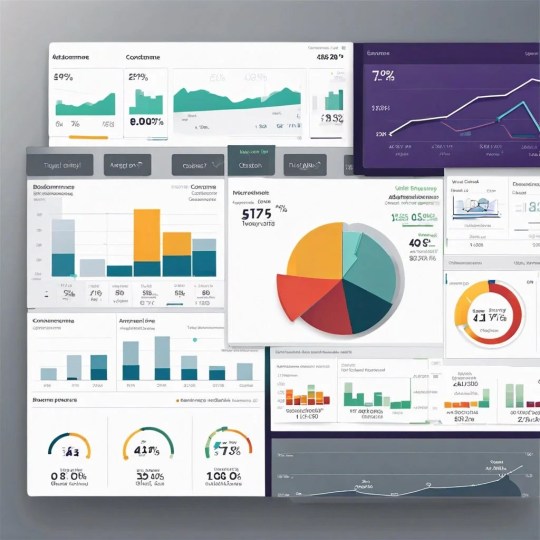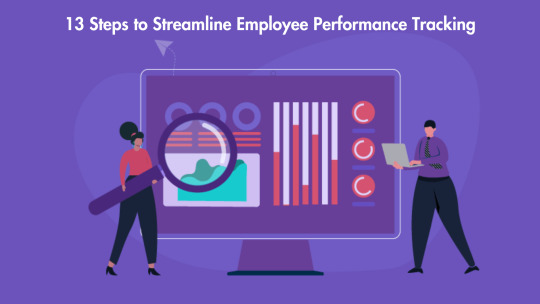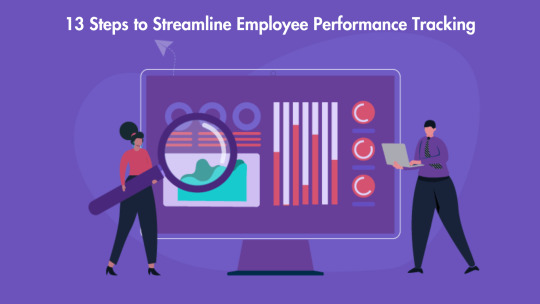#performance tracking
Explore tagged Tumblr posts
Text
Performance Marketing
PICKMYURL Performance Marketing: Empowering Your Business Growth

Discuss for Pricing. Would like to chat with PICKMYURL on Skype.
In today's highly competitive business landscape, standing out and achieving success requires a strategic approach to marketing. Enter PICKMYURL Performance Marketing—a dynamic and innovative solution that empowers businesses to optimize their online presence, drive targeted traffic, and achieve remarkable results.
This comprehensive platform combines cutting-edge technology, data-driven strategies, and expert guidance to maximize performance and unlock new opportunities for businesses across industries. In this article, we will delve into the key aspects of PICKMYURL Performance Marketing, exploring its benefits, features, and how it can help your business thrive in the digital realm.
Performance Marketing
Understanding Performance Marketing: Performance marketing is a results-oriented marketing strategy that focuses on measurable actions and outcomes, such as conversions and sales. Unlike traditional marketing methods, which rely on broad messaging and brand awareness, performance marketing centers on delivering tangible results based on key performance indicators (KPIs). PICKMYURL Performance Marketing takes this concept to the next level by leveraging advanced analytics, targeting capabilities, and optimization techniques to drive maximum ROI for businesses.
The Power of PICKMYURL Performance Marketing: PICKMYURL Performance Marketing offers a plethora of powerful features designed to enhance your marketing efforts and boost your business growth. Let's explore some of its key components:
2.1 Data-driven Insights: With PICKMYURL, data lies at the core of every decision and strategy. The platform provides robust analytics and reporting tools, allowing businesses to gain deep insights into their marketing campaigns. By analyzing key metrics, user behavior, and conversion patterns, you can make informed decisions and optimize your marketing efforts for maximum impact.
2.2 Targeted Advertising: PICKMYURL Performance Marketing enables businesses to precisely target their desired audience through various channels, including search engines, social media platforms, and display networks. By leveraging advanced targeting options such as demographics, interests, and browsing behavior, you can ensure that your marketing messages reach the right people at the right time, enhancing the chances of conversions and sales.
2.3 Conversion Optimization: Converting website visitors into paying customers is a crucial aspect of any marketing strategy. PICKMYURL Performance Marketing provides a range of tools and techniques to optimize your conversion rates. From A/B testing and landing page optimization to personalized messaging and remarketing campaigns, the platform equips you with the necessary resources to turn prospects into loyal customers.
2.4 Performance Tracking: To measure the success of your marketing efforts, it's essential to have a comprehensive tracking system in place. PICKMYURL Performance Marketing offers robust tracking capabilities, allowing you to monitor key metrics, track conversions, and evaluate the performance of your campaigns. This data-driven approach enables you to identify areas of improvement, refine your strategies, and make data-backed decisions to achieve better results.
3. Benefits of PICKMYURL Performance Marketing: Implementing PICKMYURL Performance Marketing into your business strategy can yield a wide array of benefits:
3.1 Increased ROI: By focusing on measurable results, PICKMYURL Performance Marketing helps businesses optimize their marketing spend and generate a higher return on investment. With advanced targeting and conversion optimization techniques, you can ensure that your marketing budget is allocated to the most effective channels and campaigns, resulting in increased revenue and profitability.
3.2 Enhanced Customer Engagement: PICKMYURL Performance Marketing enables businesses to create personalized and engaging experiences for their target audience. By tailoring your marketing messages based on user preferences, behavior, and demographics, you can establish stronger connections with your customers, leading to higher engagement, brand loyalty, and repeat business.
3.3 Scalability and Flexibility: Whether you're a small startup or a large enterprise, PICKMYURL Performance Marketing provides a scalable solution that can adapt to your business needs. As your business grows, the platform can accommodate increased traffic, expand your campaigns, and handle larger datasets. This scalability ensures that your marketing efforts can keep up with your business's growth trajectory, allowing you to reach new markets and expand your customer base.
3.4 Real-Time Optimization: PICKMYURL Performance Marketing operates in real-time, providing you with up-to-the-minute insights and the ability to make immediate adjustments to your campaigns. With access to real-time data, you can identify underperforming ads, adjust targeting parameters, or tweak messaging to ensure optimal results. This agility and responsiveness empower you to stay ahead of the competition and seize opportunities as they arise.
3.5 Measurable Results and Transparency: One of the standout features of PICKMYURL Performance Marketing is its emphasis on transparency and accountability. Through detailed analytics and reporting, you can track the performance of your marketing campaigns, measure key metrics, and assess the effectiveness of your strategies. This transparency allows you to make data-driven decisions, allocate resources effectively, and demonstrate the impact of your marketing efforts to stakeholders.
4. Industries and Applications: PICKMYURL Performance Marketing is a versatile solution that can benefit businesses across various industries. Here are a few examples of how different sectors can leverage this powerful platform:
4.1 E-commerce: For online retailers, PICKMYURL Performance Marketing offers a comprehensive set of tools to drive traffic, increase conversions, and boost sales. From optimizing product listings and implementing targeted advertising campaigns to leveraging remarketing strategies and personalized recommendations, e-commerce businesses can create a seamless shopping experience and maximize revenue.
4.2 SaaS and Tech Startups: Software-as-a-Service (SaaS) companies and tech startups can leverage PICKMYURL Performance Marketing to generate leads, nurture customer relationships, and drive user acquisition. By utilizing advanced targeting options and conversion optimization techniques, these businesses can reach their target audience, showcase the unique value of their solutions, and foster long-term customer loyalty.
4.3 Local Businesses: PICKMYURL Performance Marketing is equally beneficial for local businesses aiming to increase foot traffic and boost their online visibility. Through localized targeting, geofencing, and proximity-based advertising, businesses such as restaurants, salons, and retail stores can effectively reach potential customers in their vicinity, driving footfall and increasing local brand awareness.
4.4 B2B Marketing: Business-to-Business (B2B) companies can leverage PICKMYURL Performance Marketing to drive lead generation, nurture relationships, and improve customer acquisition. By implementing account-based marketing strategies, targeting key decision-makers, and utilizing data-driven insights, B2B businesses can enhance their sales funnel, streamline their marketing efforts, and achieve higher conversion rates.
5. Implementation and Support: Implementing PICKMYURL Performance Marketing into your business strategy is seamless and hassle-free. The platform provides comprehensive onboarding support, including guidance on campaign setup, tracking implementation, and performance optimization. Additionally, PICKMYURL offers dedicated customer support to address any queries or issues promptly, ensuring that you have a smooth experience throughout your marketing journey.
PICKMYURL Performance Marketing offers a comprehensive solution for businesses looking to maximize their marketing efforts, drive targeted traffic, and achieve remarkable results. By leveraging data-driven insights, advanced targeting capabilities, and conversion optimization techniques, businesses can unlock new growth opportunities, increase their ROI, and establish stronger connections with their target audience.
Whether you're a small startup or a large enterprise, PICKMYURL Performance Marketing empowers you to thrive in the digital realm, adapt to changing market dynamics, and propel your business towards success. Embrace the power of PICKMYURL Performance Marketing and take your business to new heights in the competitive world of digital marketing.
#performancemarketing #digitalmarketing #marketing #onlinemarketing #affiliatemarketing #socialmediamarketing #socialmedia #marketingagency #seo #branding #business #advertising #digitalmarketingagency #ecommerce #b #marketingdigital #googleads #contentmarketing #design #marketingtips #digitalagency #agency #affiliate #digital #agencylife #facebookads #graphicdesign #marketingstrategy #google #leadgeneration
#B2B Marketing#Local Businesses#SaaS and Tech Startups#Industries and Applications#Measurable Results and Transparency#Real-Time Optimization#Scalability and Flexibility#Enhanced Customer Engagement#Increased ROI#Benefits of PICKMYURL Performance Marketing#Performance Tracking#Targeted Advertising#Conversion Optimization#Data-driven Insights#Understanding Performance Marketing#Performance Marketing#PICKMYURL
17 notes
·
View notes
Text
#Expense Management Software#Business Workflow management#Attendance tracking#Task automation#Real-time updates#Performance tracking
0 notes
Text
A Comprehensive Guide to Understanding and Improving Your Website's Analytics
Are you making the most of your website’s analytics? In today’s world, knowing what your website’s data means is key to making smart choices for your business1. This guide will show you how to use important metrics like pageviews and traffic sources to improve your site. We’ll look at the main metrics you should watch, why website analytics matter, and how to use Google Analytics to boost your…
#Analyzing website trends#Conversion rate optimization#Data analysis for websites#Google Analytics tutorial#Improving site performance#Performance tracking#SEO analytics tools#User engagement metrics#Web traffic insights#Website visitor behaviour
0 notes
Text
https://www.bloglovin.com/@vastedge/kpi-dashboards-a-visual-guide-to-business
Unlock the power of KPI dashboards with this visual guide. This blog post provides insights into how KPI dashboards can enhance business performance by offering clear, actionable data visualizations. Learn how to design and utilize these dashboards to monitor key metrics, make informed decisions, and drive strategic growth.
#KPI Dashboards#Business Performance#Data Visualization#Key Metrics#Dashboard Design#Performance Tracking#Business Intelligence#Strategic Growth#Data Analytics#Visual Analytics
0 notes
Text
0 notes
Text
Maximizing Your SEO Potential with DA Checker Tools

In the fiercely competitive world of digital marketing, optimizing website performance is crucial for achieving success. Search engine optimization (SEO) professionals rely on various tools to gauge a website's potential and make informed decisions. Among these tools, Domain Authority (DA) checker tools stand out as indispensable resources for monitoring and improving website metrics.
What is Domain Authority?
Domain Authority is a predictive metric that estimates a website's ability to rank on search engine result pages (SERPs). Score is decided between 1 and 100, with higher scores indicating a stronger likelihood of ranking well. The calculation of DA involves multiple factors, including the number and quality of inbound links to the site. While DA itself does not directly influence SERP rankings, it serves as a critical indicator of a website’s overall SEO strength and its position relative to competitors.
Benefits of Using DA Checker Tools
DA checker tools offer a range of benefits that make them essential for SEO optimization:
Competitive Analysis: These tools enable you to compare your website’s DA with those of your competitors. By understanding where you stand, you can identify opportunities for improvement and develop strategies to surpass your competition.
Link Building: DA scores help in evaluating the quality of potential link-building opportunities. By focusing on acquiring links from high-authority sites, you can enhance your own DA, thereby improving your website’s credibility and ranking potential.
Performance Tracking: Regular use of DA checker tools allows you to monitor the effectiveness of your SEO efforts. This continuous tracking helps ensure that your strategies are working and highlights areas that need adjustment for ongoing improvement.
How to Effectively Use DA Checker Tools
Using a DA checker tool is a simple process. Enter the URL of the website or page you want to analyze, and the tool will generate detailed information about its DA and PA. This data is critical for refining your SEO strategies, pinpointing strengths, and addressing weaknesses.
Strategic Application
Integrating insights from DA and PA checks into your overall SEO strategy is crucial for maximizing their benefits. Combining these metrics with other SEO practices—such as keyword optimization, quality content creation, and technical SEO enhancements—can lead to significant improvements in website performance. The Da and Pa checker tool is particularly useful, allowing you to focus on both domain-wide and page-specific strategies, thus providing a more nuanced approach to SEO.
DA checker tools are vital for anyone serious about enhancing their website’s SEO. By providing crucial insights into Domain Authority and Page Authority, these tools enable users to make informed decisions, track their progress, and refine their strategies for better ranking potential. Incorporating these tools into a comprehensive SEO plan can significantly boost your website’s performance and visibility on search engines, driving more traffic and achieving greater success in the digital marketing landscape.
0 notes
Text
The Impact Of Team Performance Management On Employee Engagement

Employee engagement is a crucial factor determining the success and growth of any organization in this dynamic and competitive business landscape. Effective team performance management plays a significant role in fostering a work environment that promotes high levels of employee engagement. By leveraging high-performance team management strategies, organizations can ensure their teams are not only productive but also motivated and committed to their roles. This article explores the impact of team management performance on employee engagement, focusing on the importance of performance tracking, project management, and user activity tracking software.
Team Performance Management:
Team management performance involves a systematic approach to improving team efficiency and effectiveness. It includes setting clear objectives, providing regular feedback, and implementing performance-tracking mechanisms. This approach ensures that teams are aligned with the organization's goals and working collaboratively towards achieving them.
High-performance team management takes this a step further by focusing on creating teams that consistently deliver exceptional results. It involves managing performance but also fostering a culture of continuous improvement and innovation.
Link Between Performance Management and Employee Engagement:

Employee engagement refers to the emotional commitment of an employee toward their organization and its goals. Engaged employees are more likely to be inspired, effective, and loyal. Here’s how effective performance management for teams can enhance employee engagement:
Clarity and Alignment: When teams have clear goals and understand how their work contributes to the organization's success, they are more likely to be engaged. Performance management provides this clarity by setting specific, measurable, achievable, relevant, and time-bound (SMART) objectives.
Feedback and Recognition: Regular feedback and recognition are vital for maintaining high levels of engagement. Performance management systems ensure that team members receive constructive feedback and are recognize for their contributions.
Development Opportunities: Engaged employees seek growth and development. Performance management identifies skill gaps and provides opportunities for training and career advancement.
Collaboration and Teamwork: High-performance team management fosters a collaborative environment where team members support each other. This sense of camaraderie and collective effort enhances engagement.
The Role of Performance Tracking
Performance tracking is essential for monitoring progress and identifying areas for improvement. By tracking performance metrics, organizations can ensure that teams stay on course and meet their objectives. Performance tracking involves the use of various tools and techniques, including user activity-tracking software.
Effective Performance Management Tool
Several tools can aid in managing team performance and enhancing employee engagement.
EmpMonitor: EmpMonitor is a comprehensive user activity-tracking software that helps organizations monitor employee performance and productivity. There are some key features like activity Monitoring, Project Management Integration, Real-Time Reporting, and employee Engagement Metrics.
Asana: A project management tool that helps teams organize, track, and manage their work.
Trello: A visual collaboration tool that organizes tasks into boards, making it easy for teams to track progress.
Slack: A communication platform that facilitates collaboration and real-time communication among team members.
High-Performance Team Management Strategies

To build and maintain high-performance teams, organizations must adopt specific strategies focused on individual and collective performance. Here are some effective strategies:
Goal Setting: Establish clear, achievable goals for the team. Confirm that each team member comprehends their part in reaching these goals.
Regular Reviews: Complete periodic performance reviews to evaluate gain and provide feedback.
Training and Development: Offer continuous learning opportunities to enhance skills and knowledge.
Recognition and Rewards: Recognize and reward team members for their contributions to motivate and encourage high performance.
Collaboration Tools: Use collaboration tools to facilitate communication and teamwork.
The Benefits of High-Performance Teams
High-performance teams bring numerous benefits to organizations, including:
Increased Productivity: High-performance teams are more efficient and productive, delivering quality results promptly.
Improved Morale: Engaged and motivated teams have higher morale, which reduces turnover and enhances job satisfaction.
Innovation: Collaborative and engaged teams are more likely to generate innovative ideas and solutions.
Organizational Growth: High-performance teams contribute significantly to the overall growth and success of the organization.
You Can Also Watch:
youtube
Conclusion:
Team performance management is a critical component of fostering employee engagement. By implementing effective performance tracking and leveraging tools like EmpMonitor, organizations can ensure their teams remain motivated, productive, and aligned with organizational goals. High-performance team management strategies enhance individual and team performance contribute to a positive and collaborative work environment. Emphasizing these aspects can lead to sustained organizational success and a highly engaged workforce.
#performance management#high-performance team management#performance management for teams#high-performance team#performance tracking#project management#activity tracking software#Youtube
0 notes
Text
How to Use Adobe Analytics to Track Your E-Commerce Performance
Unlocking the Secrets of E-Commerce Success: Leveraging Adobe Analytics Navigating the ever-evolving world of e-commerce can be a daunting task, but with the right tools and strategies, you can unlock the secrets to sustained success. Adobe Analytics is a powerful platform that offers a comprehensive suite of features to help entrepreneurs and business owners like yourself optimize their online…

View On WordPress
0 notes
Text
Explore the benefits of multi-channel marketing campaigns to boost your reach, engagement, and brand consistency. Learn how to integrate different channels, craft cohesive messaging, and track performance for effective strategies. Contact Koobr today to elevate your marketing efforts and drive growth.
#multi-channel marketing#increased reach#engagement#brand consistency#customer insights#integrated strategy#cross-promoting content#marketing automation#cohesive messaging#personalised content#performance tracking#data analysis#continuous optimisation#marketing goals#Koobr
0 notes
Text
13 Steps to Streamline Employee Performance Tracking

Employee performance monitoring is essential for businesses to ensure productivity and efficiency. However, manual tracking processes can be time-consuming and prone to errors. By streamlining the process, businesses can save time and resources while improving accuracy. Here are 13 steps to streamline employee performance tracking using workforce management tools and performance trackers:
Define Clear Goals and Expectations
Establishing clear goals and expectations is crucial for an effective employee performance tracker. By defining specific, measurable, achievable, relevant, and time-bound (SMART) goals, employees understand what is expected of them. This clarity fosters motivation and accountability, leading to improved performance.
Choose the Right Workforce Management Tool
Selecting the right workforce management tool is essential for streamlining performance tracking. Look for a tool that aligns with your organization's needs and goals. Features such as time tracking, task management, and performance analytics can help you track employee performance accurately and efficiently.
Implement an Employee Performance Tracker
Using an employee performance tracker allows you to monitor progress toward goals and track key performance indicators (KPIs) relevant to each employee's role. It helps you identify areas for improvement and provide targeted feedback.
Provide Regular Feedback
Regular feedback sessions are essential for keeping employees informed about their performance. Use the performance tracker to provide specific and constructive feedback, highlighting areas of strength and areas for improvement.
Encourage Employee Self-Assessment

Encouraging employees to assess their performance can lead to greater self-awareness and motivation. Use self-assessment as a tool for employee development and improvement, allowing employees to take ownership of their performance.
Offer Training and Development Opportunities
Providing training and development opportunities shows employees that you are invested in their growth. Use the performance tracker to identify areas where training is needed, helping employees improve their skills and performance.
Use Performance Data for Decision-Making
Using data from the performance tracker allows you to make informed decisions about employee performance. Identify trends and patterns to improve overall performance, helping you allocate resources effectively.
Automate Performance Tracking Processes
Automating performance-tracking processes can save time and reduce errors. Use automation to streamline tasks such as attendance monitoring and performance reviews, freeing up time for more strategic activities.
Integrate Performance Tracking with Other Systems
Integrating performance tracking with other systems, such as payroll and HR systems, ensures that data is shared seamlessly between systems. This integration reduces duplication of effort and improves data accuracy.
Review and Improve the Process Regularly
Regularly reviewing the performance tracking process allows you to identify areas for improvement. Solicit feedback from employees and managers to make the process more effective, ensuring that it continues to meet the needs of your organization.
Define Clear Goals and Expectations

Establishing clear goals and expectations is fundamental for an effective employee team tracking software. Clear goals provide employees with a sense of direction and purpose, helping them understand what is expected of them. When setting goals, ensure they are specific, measurable, achievable, relevant, and time-bound (SMART). This clarity not only helps employees focus their efforts but also allows managers to assess performance objectively. Additionally, clear expectations help prevent misunderstandings and promote a positive work environment based on transparency and accountability.
Choose the Right Workforce Management Tool
Selecting the right workforce management tool is essential for streamlining performance tracking and enhancing productivity. When choosing a tool, consider your organization's specific needs and goals. Look for features such as time tracking, task management, and performance analytics. These features can help you track employee performance more effectively, identify areas for improvement, and allocate resources efficiently. By investing in the right tool, you can streamline your performance-tracking processes and drive better business outcomes.
Implement an Employee Performance Tracker
Implementing an employee performance tracker can provide valuable insights into employee performance and help you make informed decisions. A performance tracker allows you to monitor progress toward goals and track key performance indicators (KPIs) relevant to each employee's role. By regularly reviewing performance data, you can identify trends, recognize top performers, and address performance issues proactively. This data-driven approach can lead to improved employee engagement, productivity, and overall business performance.
Conclusion
Streamlining employee performance tracking is crucial for organizations seeking to enhance productivity, efficiency, and employee engagement. By following the 13 steps outlined above, businesses can create a structured approach to performance tracking that promotes transparency, accountability, and continuous improvement.
#employee performance tracking#performance tracker#employee performance tracker#performance tracking#track employee performance
0 notes
Text
13 Steps to Streamline Employee Performance Tracking

Employee performance monitoring is essential for businesses to ensure productivity and efficiency. However, manual tracking processes can be time-consuming and prone to errors. By streamlining the process, businesses can save time and resources while improving accuracy. Here are 13 steps to streamline employee performance tracking using workforce management tools and performance trackers:
Define Clear Goals and Expectations
Establishing clear goals and expectations is crucial for an effective employee performance tracker. By defining specific, measurable, achievable, relevant, and time-bound (SMART) goals, employees understand what is expected of them. This clarity fosters motivation and accountability, leading to improved performance.
Choose the Right Workforce Management Tool
Selecting the right workforce management tool is essential for streamlining performance tracking. Look for a tool that aligns with your organization's needs and goals. Features such as time tracking, task management, and performance analytics can help you track employee performance accurately and efficiently.
Implement an Employee Performance Tracker
Using an employee performance tracker allows you to monitor progress toward goals and track key performance indicators (KPIs) relevant to each employee's role. It helps you identify areas for improvement and provide targeted feedback.
Provide Regular Feedback
Regular feedback sessions are essential for keeping employees informed about their performance. Use the performance tracker to provide specific and constructive feedback, highlighting areas of strength and areas for improvement.
Encourage Employee Self-Assessment

Encouraging employees to assess their performance can lead to greater self-awareness and motivation. Use self-assessment as a tool for employee development and improvement, allowing employees to take ownership of their performance.
Offer Training and Development Opportunities
Providing training and development opportunities shows employees that you are invested in their growth. Use the performance tracker to identify areas where training is needed, helping employees improve their skills and performance.
Use Performance Data for Decision-Making
Using data from the performance tracker allows you to make informed decisions about employee performance. Identify trends and patterns to improve overall performance, helping you allocate resources effectively.
Automate Performance Tracking Processes
Automating performance-tracking processes can save time and reduce errors. Use automation to streamline tasks such as attendance monitoring and performance reviews, freeing up time for more strategic activities.
Integrate Performance Tracking with Other Systems
Integrating performance tracking with other systems, such as payroll and HR systems, ensures that data is shared seamlessly between systems. This integration reduces duplication of effort and improves data accuracy.
Review and Improve the Process Regularly
Regularly reviewing the performance tracking process allows you to identify areas for improvement. Solicit feedback from employees and managers to make the process more effective, ensuring that it continues to meet the needs of your organization.
Define Clear Goals and Expectations

Establishing clear goals and expectations is fundamental for an effective employee team tracking software. Clear goals provide employees with a sense of direction and purpose, helping them understand what is expected of them. When setting goals, ensure they are specific, measurable, achievable, relevant, and time-bound (SMART). This clarity not only helps employees focus their efforts but also allows managers to assess performance objectively. Additionally, clear expectations help prevent misunderstandings and promote a positive work environment based on transparency and accountability.
Choose the Right Workforce Management Tool
Selecting the right workforce management tool is essential for streamlining performance tracking and enhancing productivity. When choosing a tool, consider your organization's specific needs and goals. Look for features such as time tracking, task management, and performance analytics. These features can help you track employee performance more effectively, identify areas for improvement, and allocate resources efficiently. By investing in the right tool, you can streamline your performance-tracking processes and drive better business outcomes.
Implement an Employee Performance Tracker
Implementing an employee performance tracker can provide valuable insights into employee performance and help you make informed decisions. A performance tracker allows you to monitor progress toward goals and track key performance indicators (KPIs) relevant to each employee's role. By regularly reviewing performance data, you can identify trends, recognize top performers, and address performance issues proactively. This data-driven approach can lead to improved employee engagement, productivity, and overall business performance.
Conclusion
Streamlining employee performance tracking is crucial for organizations seeking to enhance productivity, efficiency, and employee engagement. By following the 13 steps outlined above, businesses can create a structured approach to performance tracking that promotes transparency, accountability, and continuous improvement.
#employee performance tracking#performance tracker#employee performance tracker#performance tracking#track employee performance
0 notes
Text
What Are the Key Components of an Effective Content Planning Strategy?

Discover the essential elements of crafting a successful content planning strategy. Learn how to define objectives, understand your audience, create engaging content, and optimize distribution for maximum impact.
Introduction
Crafting an effective content planning strategy is pivotal in today's digital landscape. By understanding the key components that contribute to a successful strategy, marketers can create content that resonates with their target audience and drives meaningful results.
Understanding Your Audience
To develop a content planning strategy that yields results, it's crucial to understand your audience inside out. By conducting thorough audience research, including demographics, interests, and pain points, you can tailor your content to meet their needs effectively.
Defining Content Objectives
Setting clear and measurable objectives is paramount in content planning. By defining SMART (Specific, Measurable, Achievable, Relevant, Time-bound) goals, marketers can track their progress and ensure that their content aligns with broader business objectives.
Content Ideation and Creation
Generating creative and engaging content ideas is the cornerstone of any successful content planning strategy. By leveraging insights gained from audience research, marketers can develop content that resonates with their target audience and inspires action.
Content Distribution and Promotion
Even the most compelling content won't achieve its full potential without a solid distribution and promotion strategy. Identifying the right channels and tactics to reach your audience is essential for maximizing the impact of your content.
Performance Tracking and Optimization
Continual optimization is key to maintaining the effectiveness of your content planning strategy. By tracking key performance metrics and analyzing data insights, marketers can identify areas for improvement and refine their approach over time.
Conclusion
In conclusion, crafting an effective content planning strategy requires a deep understanding of your audience, clear objectives, creative content creation, strategic distribution, and ongoing optimization. By following these key components, marketers can develop content that resonates with their audience and drives meaningful results.
content planning strategy, best seo company, Seo, Best SEO company in chennai, SEO services in chennai, seo company in chennai, best seo services, seo company, top seo company in chennai, seo services, seo consulatnt in chennai, content strategy, Audience, Demographics, Content Objectives, Content Creation, Performance Tracking
#content planning strategy#best seo company#Seo#Best SEO company in chennai#SEO services in chennai#seo company in chennai#best seo services#seo company#top seo company in chennai#seo services#seo consulatnt in chennai#content strategy#Audience#Demographics#Content Objectives#Content Creation#Performance Tracking
0 notes
Text
0 notes
Text
The Importance of Performance Management System in India
Introduction
Introduction: Welcome, dear reader, to the fascinating world of performance management systems in the land of spices and Bollywood, India! Buckle up, folks, because we're about to embark on a journey that will not only enlighten you but also make your brain cells dance with joy. So, what's the deal with performance management systems, you ask? Let's dive in and uncover the secrets behind this magical tool that has the power to transform organisations and the lives of their employees. Trust me, this is going to be one wild ride!
Understanding Performance Management System
Understanding Performance Management System: Performance management system is a term that can make you feel all official and formal, but worry not, it's not as complicated as it sounds. In simple terms, it refers to a process that helps organisations measure and improve their employees' performance. Now, let's break it down even further (because that's what we do here). The performance management system has two main components - the definition bit and the components bit. First up, the definition. Picture this: you're working hard on a project, putting in extra hours, and spilling more coffee than you care to admit. But how do you know if you're actually doing a good job? That's where the performance management system comes in. It's like a compass that tells you if you're heading in the right direction or if you're lost in the vast wilderness of mediocrity. As for the components, it's like the recipe for a delicious performance soufflé. You've got your goal setting, where you define what needs to be achieved. Then comes the continuous feedback mechanism, where you get guidance on your progress and any necessary course correction. And last but not least, there are regular performance reviews to evaluate your overall performance and identify areas for improvement. So, to sum it up, the performance management system is like your personal cheerleader, accountability partner, and mentor all rolled into one. It helps you stay on track, improve your performance, and become the hero of your own success story. Sounds pretty awesome, right? And that, my friends, is the skinny on understanding the performance management system. Stay tuned for more juicy details on why it's so darn important in the Indian context.
Benefits of Using Performance Management System
Ah, the Performance Management System in India! An absolute game-changer! Let's dive into the amazing benefits it brings to the table, shall we? First and foremost, this system does wonders for improving employee performance. Gone are the days of slacking off and pretending to be busy (we've all been there). With the Performance Management System, employees are held accountable for their work, ensuring that they stay focused and motivated. No more hiding behind the excuse of "I didn't know what was expected of me." Now, onto the thrilling topic of enhancing employee engagement. We all know how fun it is to work in an environment where no one seems to care about their job. But fear not, because the Performance Management System swoops in to rescue us from that nightmare. By regularly tracking and evaluating employee progress, this system ensures that employees are recognized for their hard work and achievements. It's like a virtual high-five, but even better! And let's not forget about the magical power of identifying skill gaps and training needs. It's always a blast when you realise you've been doing something completely wrong for years, right? Well, with the Performance Management System, those days are long gone. By analysing the performance data of employees, organisations can easily spot areas where additional training is required. It's like having a superhero mentor who guides you towards greatness. So, you see, the Performance Management System isn't just some fancy buzzword. It's a tool that revolutionises the way organisations operate, making sure everyone is on their A-game. It's like having a personal cheerleader, motivator, and mentor all rolled into one. But wait, there's more! Stay tuned for the next section, where we'll unravel the challenges faced in implementing this amazing system. Trust me, it's not all sunshine and rainbows, but we'll handle it with a dash of wit and wisdom. Until next time, folks!
Challenges Faced in Implementing Performance Management System
Challenges Faced in Implementing Performance Management System Ah, the joy of implementing a performance management system in an organisation. It's like trying to teach a cat to do tricks – a little frustrating and a lot entertaining. But hey, who doesn't love a good challenge, right? One of the biggest hurdles that organisations face when it comes to implementing a performance management system is resistance to change. You see, humans have this interesting habit of clinging onto familiar things, even if those things are as useful as a chocolate teapot. So, when you try to introduce a new system that promises to revolutionise the way performance is managed, expect some pushback. It's like asking someone to switch from their beloved old Nokia phone to the latest iPhone overnight – it's bound to cause a few raised eyebrows and possibly even some tears of attachment. Another challenge that organisations often encounter is the lack of clear goals and expectations. It's like trying to play a game without knowing the rules – you're essentially shooting in the dark, hoping for the best. Without clear objectives, employees are left wandering aimlessly, not knowing what they need to achieve or how their performance will be evaluated. It's a recipe for disaster, my friend. And let's not forget about ineffective feedback mechanisms. We all know that feedback is the lifeblood of any performance management system. It's like the sweet nectar that keeps the system alive and kicking. But here's the problem – if the feedback mechanisms are faulty or non-existent, you might as well be shouting into the void. Without proper feedback channels, employees are left wondering about their progress and improvement areas. It's like trying to navigate a maze blindfolded – not very productive, I must say. So, there you have it – the challenges that organisations face in implementing a performance management system. From resistance to change and lack of clear goals to ineffective feedback mechanisms, it's a bumpy ride. But fear not, my friends, for there are ways to overcome these challenges and pave the way for a successful performance management system. Stick around, and I'll show you how it's done. But first, let's take a coffee break. Who's up for a cup o' joe?
Best Practices for Successful Performance Management System
So, you want to learn about the best practices for a successful performance management system? Well, you've come to the right place! Buckle up and get ready for some serious knowledge bombs, with a dash of quirky humour, of course. Setting SMART goals is the first step towards achieving greatness. SMART stands for Specific, Measurable, Attainable, Relevant, and Time-bound. Basically, it means you need to set clear and specific goals that are actually achievable within a specific timeframe. So, forget about those vague goals like "be the best employee ever," and start setting goals like "increase sales by 10% in the next quarter." Now that we have our goals in place, it's time for some frequent and constructive feedback. Gone are the days of waiting until the performance review to address any issues. Instead, be proactive and provide feedback on a regular basis. And don't just focus on the negatives; make sure to acknowledge and praise the good stuff too. Because who doesn't love a little pat on the back? Speaking of performance reviews, they are an essential part of a successful performance management system. These reviews provide an opportunity to discuss progress, set new goals, and address any concerns or areas for improvement. Use this time wisely and have an open and honest conversation with your employees. And by open and honest, I mean no sugar-coating or beating around the bush. Be direct, but remember to also be respectful. We don't want any tears in the workplace. Now, these are just a few of the key best practices for a successful performance management system. Remember, it's not about following some rigid rules, but rather finding the approach that works best for your organisation. So, go forth and implement these best practices, and watch your performance management system soar to new heights! Happy managing, folks! PS: Just a friendly reminder, implementing these best practices does not guarantee an office full of unicorns and rainbows, but it sure does increase your chances of a highly motivated and engaged workforce. Cheers!
Case Studies: Organisations That Have Benefited from Performance Management System
Case Studies: Organisations That Have Benefited from Performance Management System When it comes to the effectiveness of performance management systems, there are several organisations in India that have experienced significant improvements. One such instance is XYZ Corporation, where the implementation of a performance management system resulted in a remarkable boost in employee performance. By setting clear goals and providing regular feedback, XYZ Corporation witnessed a surge in productivity and overall job satisfaction. Similarly, ABC Enterprises also reaped the benefits of a performance management system. With a focus on engaging employees, ABC Enterprises saw a remarkable rise in employee engagement levels. Employees felt more valued and recognized for their efforts, leading to increased motivation and commitment towards achieving organisational goals. Another notable case is PQR Industries, where the performance management system proved instrumental in identifying skill gaps and training needs. By conducting regular performance reviews, PQR Industries efficiently addressed areas where employees needed additional support or training, resulting in a more skilled and capable workforce. These are just a few examples of how organisations in India have successfully harnessed the power of performance management systems. By embracing this holistic approach to performance evaluation and improvement, businesses can unlock the full potential of their employees and drive overall growth and success. So, what are you waiting for? It's time to revolutionise your organisational performance too!
Conclusion
So we've reached the end of our journey into the world of Performance Management Systems. Phew! It's been quite a ride, hasn't it? But before we bid adieu, let's quickly recap the key points we've covered so far. Performance Management Systems play a crucial role in organisations, helping to improve employee performance, enhance engagement, and identify skill gaps and training needs. It's like having a magic wand that makes everyone more efficient and effective. Well, maybe not quite like a magic wand, but you get the idea. Of course, implementing a Performance Management System isn't always a walk in the park. It comes with its fair share of challenges, such as resistance to change, unclear goals and expectations, and ineffective feedback mechanisms. But hey, nothing worth having ever comes easy, right? Luckily, there are some best practices that can help organisations navigate these challenges and make their Performance Management System a success. Setting SMART goals, providing frequent and constructive feedback, and conducting regular performance reviews are just a few of these practices. It's all about creating a system that works for your unique organisational needs. But don't just take my word for it. There are plenty of organisations out there that have already reaped the benefits of a well-implemented Performance Management System. They've seen increased productivity, happier employees, and better results overall. It's like a win-win-win situation. So, as we wrap up this blog, let's remember that a successful Performance Management System is the key to unlocking the full potential of your organisation. It may take some effort, but trust me, it's worth it in the end. Now go forth and embrace the power of performance management!
0 notes
Text

#ReadTheBlog | #PerformanceMarketing Demystified: Unravel the #KeyBenefits & Elevate your #DigitalStrategy. Discover the power of data-driven strategies, #PersonalizedTargeting, #Influencer collaborations, and more. Amplify your #Marketing game and achieve exceptional #ROI. Read the #Blog now! #DigitalExcellence #MarketingExcellence #MarketingStrategies #AadisContentCafe . . . #DigitalMarketing #PerformanceMarketingBlog #PerformanceMarketingBestPractices #DigitalPerformanceMarketing #MarketingBestPractices #Marketing #Marketer #MarketingBlog #MarketingStrategy #MarketingTips #ContentMarketing #AdityaKhandelwal #TheContentCafe #Targeting #PerformanceMarketingMastery
------------------------
Source - https://www.mradityakhandelwal.com/post/mastering-performance-marketing-and-amplifying-your-success
#Performance Marketing#Digital Marketing#Marketing Analytics#Benefits of Performance Marketing#Influencer Marketing#Audience Targeting#Return on Investment#Performance Tracking
0 notes